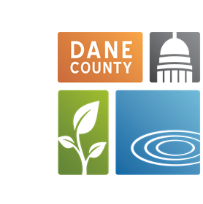
Native plants have tremendous water quality benefits and increase habitat and food sources for pollinators. Because of this, the Dane County Land and Water Resources Department has started a native plant growing program to provide a source of free native plants to help schools and community groups in Dane County. These plants will be available in spring and summer each year. Spring plants are donated from community members through the Plant Dane! plant sale and fall plants are grown by local volunteers.
Since the program began in 2016, than 52,000 plants have been distributed to 230 different groups, including schools, neighborhood associations and community centers. Scroll to the bottom of the page for an interactive map of projects that have received plants from this program.
Community organizations, schools, nonprofits or businesses are eligible for this project as long as they meet the following requirements:
Not Eligible
Please Note:
Sites that pond water or have poor drainage may not be able to support the plants provided by this program. If you have any questions or concerns about whether or not your site is appropriate for native plants or a rain garden, please contact us before submitting this application.
The native plants come in plug trays and should be kept moist until planting. Once in the ground, plants will need watering and care until their roots become established. Plant recipients must provide photos of the planting process and/or final garden so we can add them to our online map. If people are in the photos, please make sure you have their permission to use the photo.
We would love an updated photo of the garden in bloom after a few years.
Application Steps
Next Steps:
If you have questions about this program, please contact:
Christal Campbell
Stormwater Education Coordinator
(608) 228-4493
campbell.christal@danecounty.gov
Anyone can volunteer for this program as long as you have some outdoor space available. Volunteers participate in a half day training in the fall to learn more about the program and how to grow native plants. The growing process takes place outside - no indoor growing lights or equipment is required. The volunteer grows and cares for the seedlings and returns them to us to distribute. We ask that the volunteer provide the potting mix if able. If you are interested in volunteering, please register as a volunteer in our MyImpact Volunteer Portal and indicate "Native Plant Propagation" as an activity of interest. You will be notified when we host a fall workshop to train new volunteers.
Since the program began in 2016, than 52,000 plants have been distributed to 230 different groups, including schools, neighborhood associations and community centers. Click on the button below for an interactive map of projects that have received plants from this program.